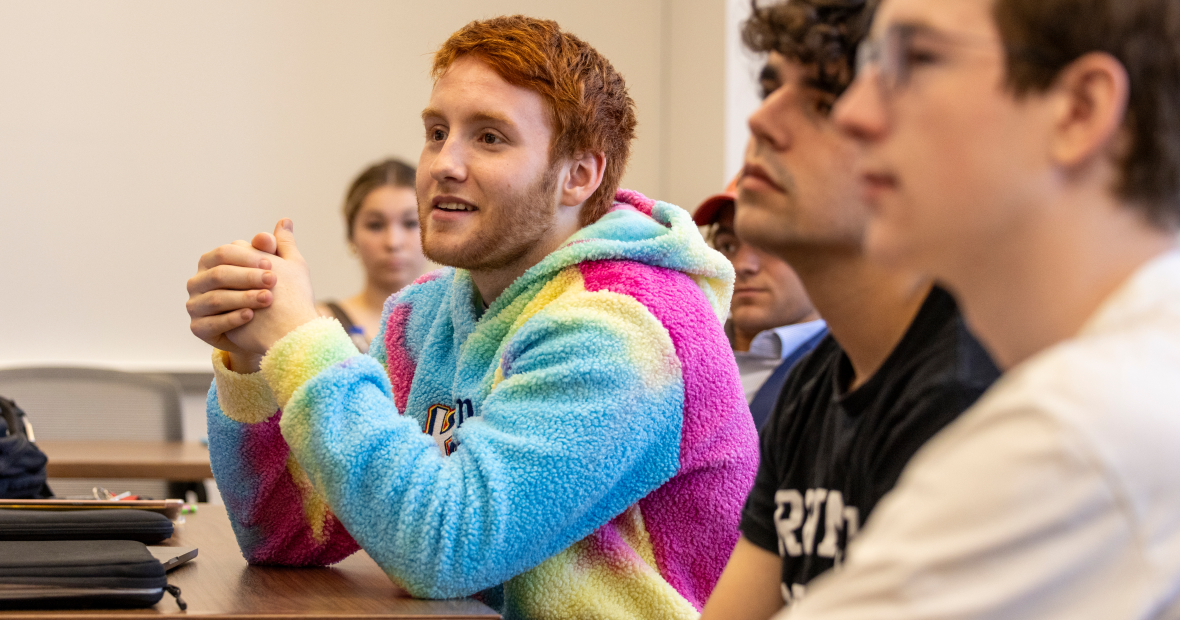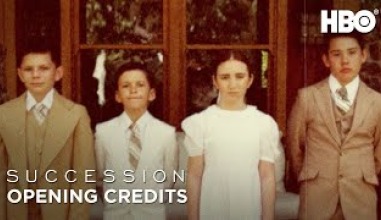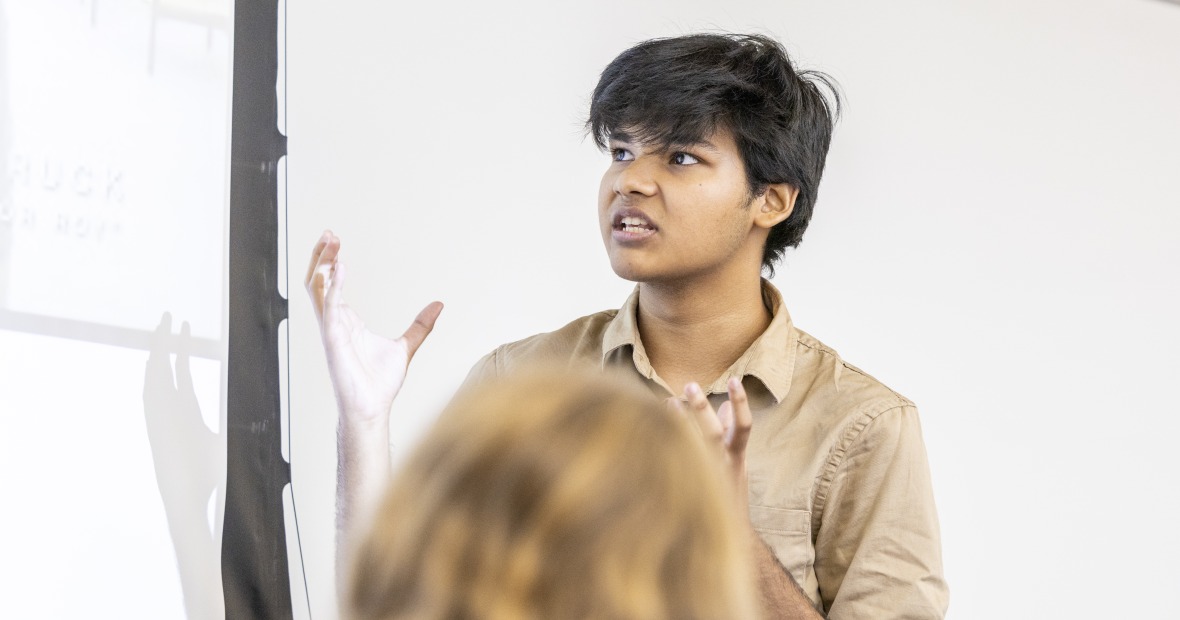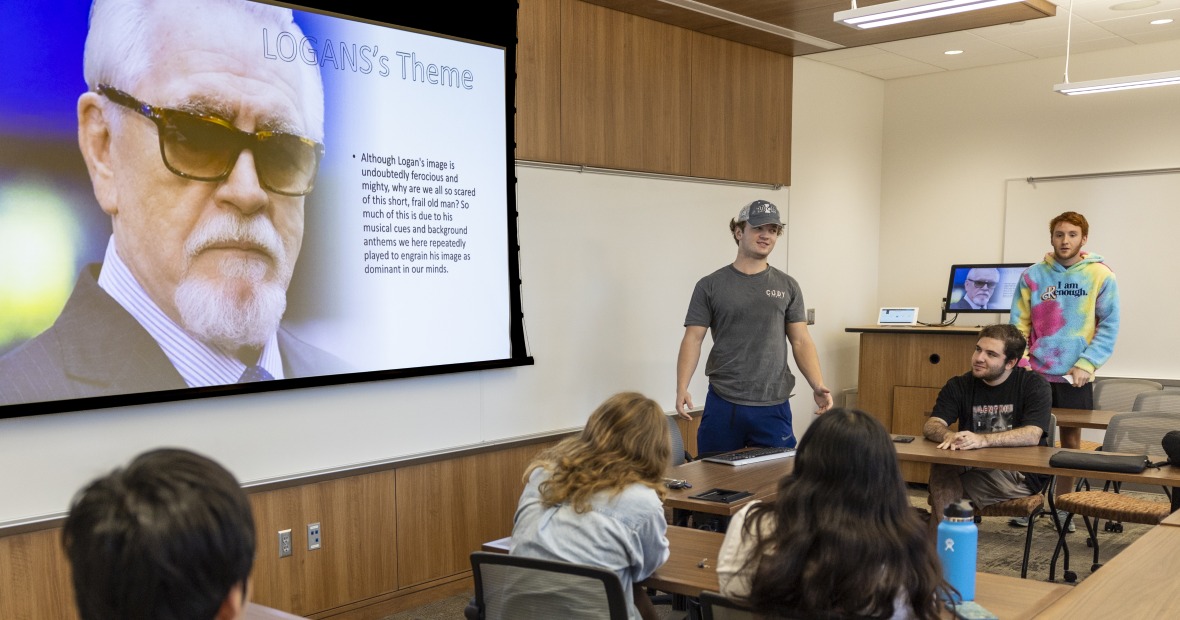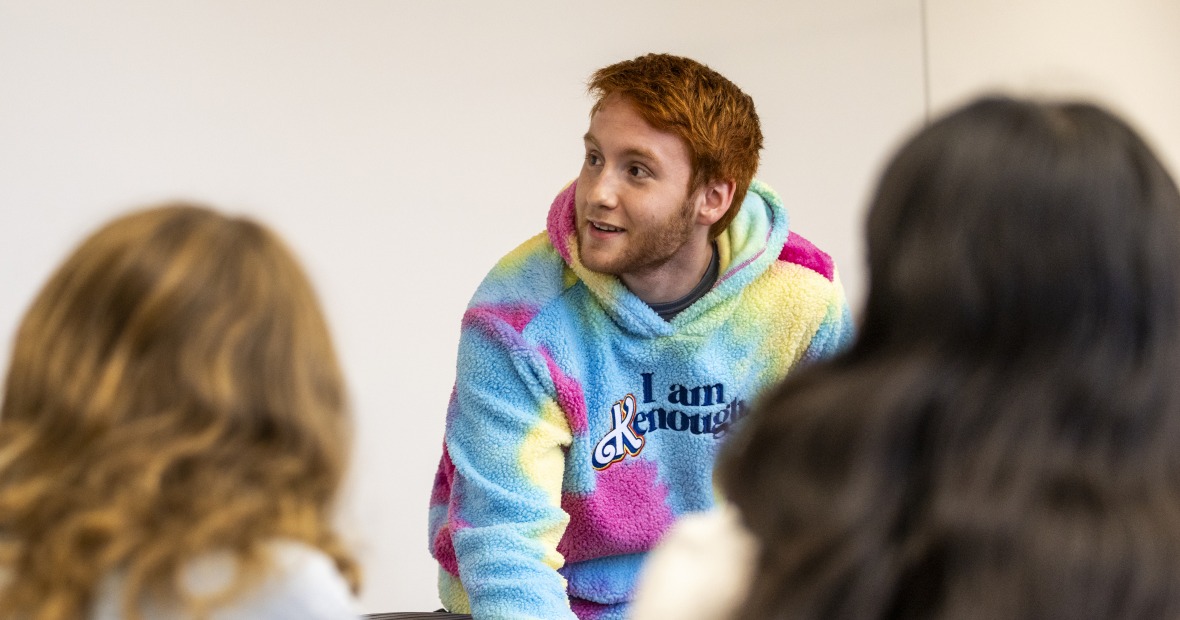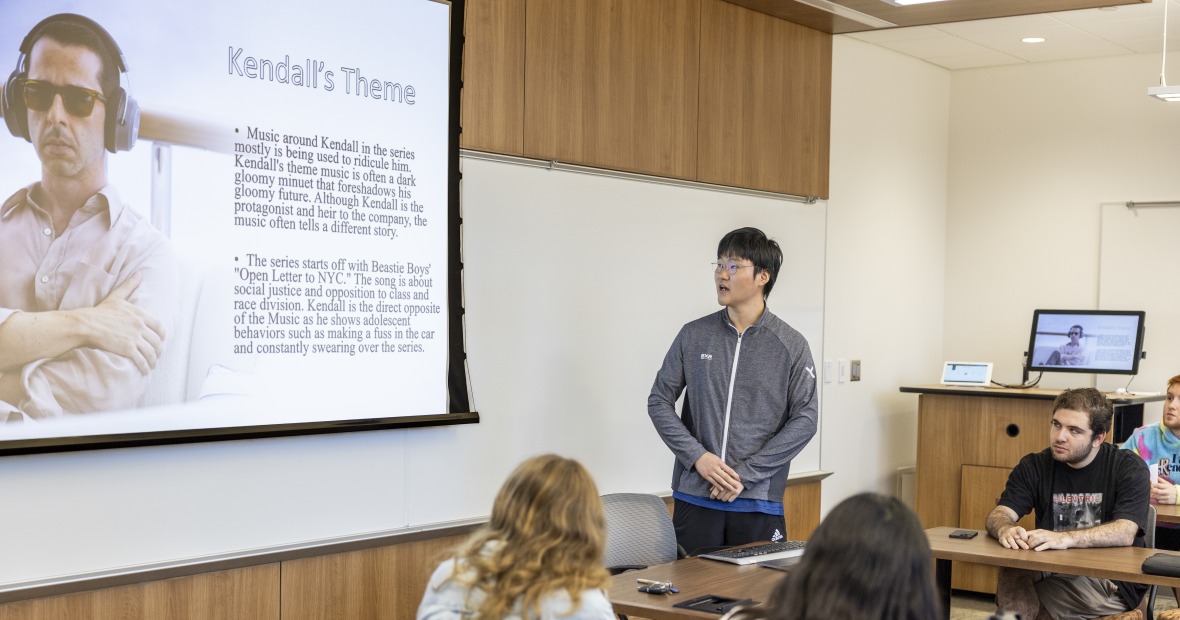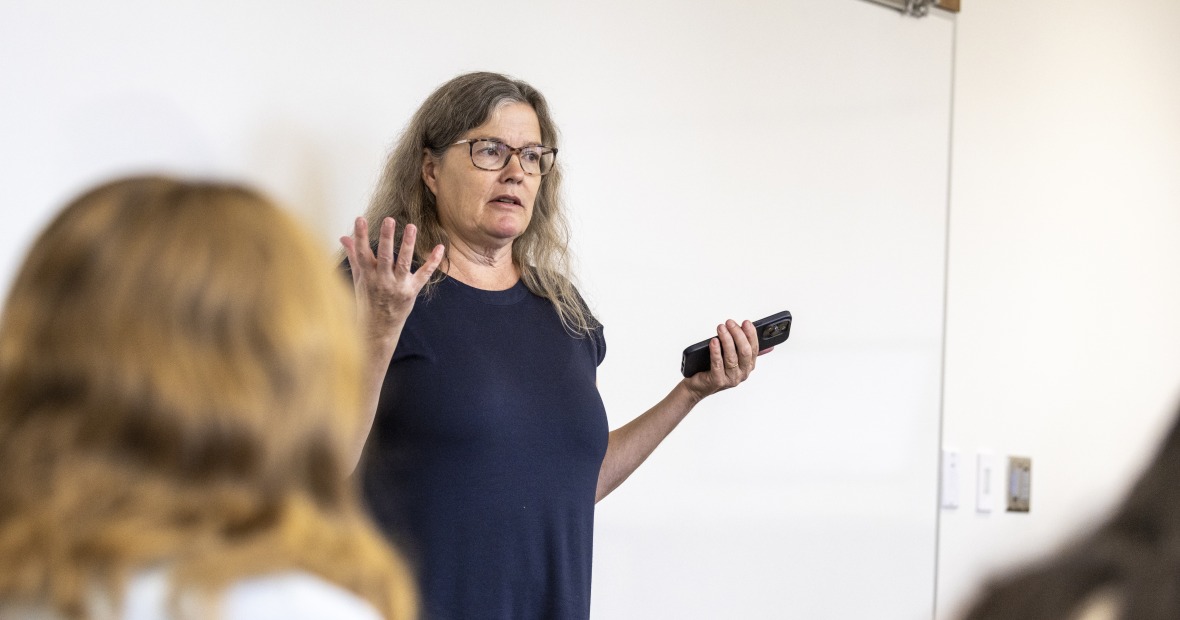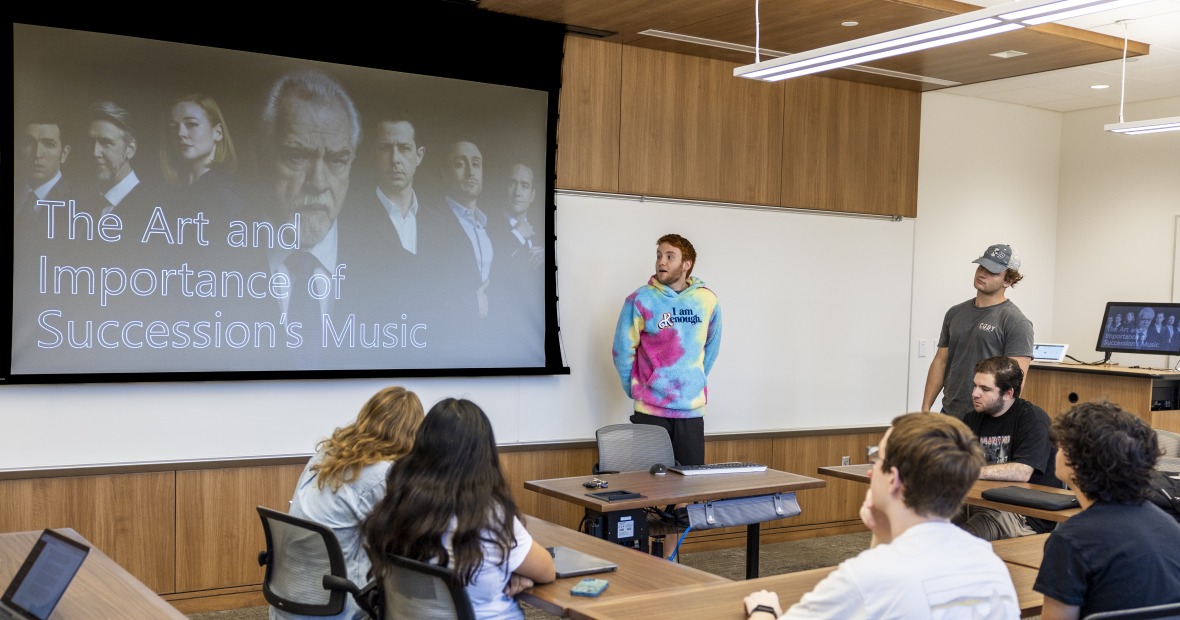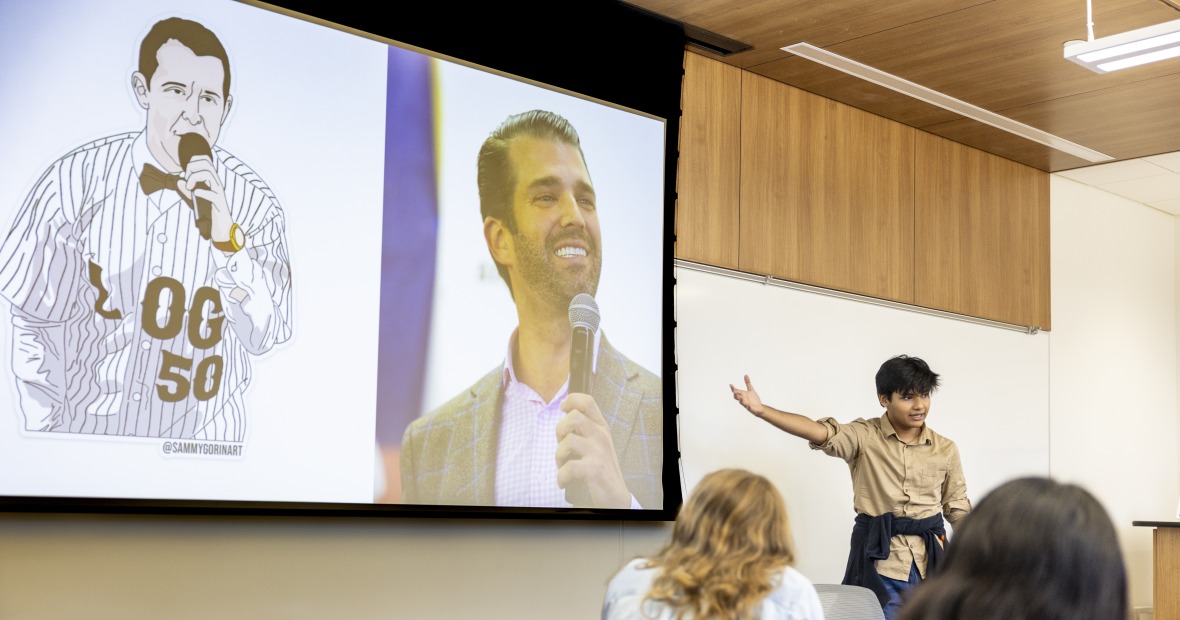Making Sense of Succession: A Grinnell Tutorial Contextualizes Popular TV Series
Literary intrigue, entitled heirs, and unspoken family trauma …
Every semester, Grinnell faculty innovate the liberal arts curriculum through creative and compelling topics. This year, the popular HBO television series Succession is making its mark in the classroom, encouraging Grinnellians to analyze its parallels to American politics and its references to artworks and literary pieces, including Shakespeare, European cinema, and Renaissance art.
The satirical comedy-drama, praised for its dimensional characters and sharp dialogue, follows the inner workings of Waystar Royco, a fictional media and entertainment conglomerate controlled by CEO and patriarch Logan Roy (Brian Cox). His adult children — Kendall (Jeremy Strong), Roman (Kieran Culkin), and Shiv (Sarah Snook) — vie for a larger presence in the firm, one of them standing to inherit its influence over four continents and 50 countries. Power struggles, abuse, and betrayals taint the characters’ family dynamics and inevitably lead to disastrous effects for the world at large.
The show’s contemporary tale, foreboding music, and intimate cinematography entranced Professor Kelly Herold, who curated the course “Making Sense of Succession.” The class, known as a Tutorial, joins other creative topics — from cancel culture to street food — available to first-year students as their only required course at Grinnell.
“I’ve always loved Tutorial,” says Herold, who is rewatching the series with her students. “Whenever I could do something fun and interesting to the students, like covering a show like Succession, it makes the learning aspect easier because of how they are invested.” Succession carries a wealth of content to analyze — from song choices like “An Open Letter to NYC,” which Kendall raps in the pilot — to dialogue from the older generation in the show. In particular, Herold was impressed by a character’s quotation of “The Love Song of J. Alfred Prufrock,” by T. S. Eliot in Season 1, Episode 2. With these examples in mind, she began designing her tutorial, focusing her syllabus on Succession’s allusions alongside its narrative and character arcs.
Tutorial classes are crafted to strengthen Grinnellians’ critical thinking in their first semesters and bolster their skills in writing, discussion, and oral presentations. So far, Herold and her class have watched the show’s first season and have read their first literary piece, Shakespeare’s Hamlet. Herold believes Shakespeare’s tragedies deepen any analysis of Succession and vice versa, as Succession’s storylines are fraught with irreparable marriages, self-destructive behaviors, and fractured sibling relationships. “In these pieces, the stakes are high — people are dying and losing tons of money,” Herold remarks, referring to Shakespeare’s King Lear and Macbeth. Both pieces will be read and analyzed in her class.
Herold will also guide her students through in-class performances of Shakespeare and Succession scripts while comparing intersecting themes. “Even the fates of the female heroes in Shakespeare are similar to the female heroes of Succession,” she notes, and her students have begun investigating those gender dynamics, as well.
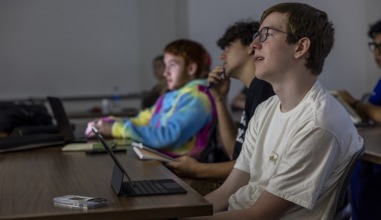
Most recently, students discussed “Tern Haven,” Season 2, Episode 5 of Succession, which depicts a brash and ruthless Logan Roy as he flies his family out to the Pierce estate to purchase their media conglomerate, PGM. Beforehand, Logan promised the successor title to his sole daughter in the ensemble, Shiv, but asked for it to be kept secret until he announces it to the public.
To start the class discussion, Herold focused on Shiv’s big mistake in the episode – announcing herself pre-emptively as the next CEO at a dinner with the Pierces, a turning point that reminds us that Logan doesn’t like to be painted into a corner.
“The original reason Logan tells Shiv she is the successor [of Waystar Royco] is to force her to leave her political campaign,” comments Mitchell Paiva ’27. Shiv once acted as a political advisor for Gil Eavis, a progressive presidential candidate who dreamt of tearing down the problematic media empire. “Shiv was making a career for herself until Logan reined her in,” he adds.
Throughout the course, discussions like these push students to examine various elements of Succession – from costuming to actors’ character portrayals – and explore how they support the show’s storytelling. Ultimately, says Herold, the goal of the class is to prompt students to “analyze works of art, whether a literary piece or a hit drama show like Succession” in new, compelling ways. “What I’m attempting to do is have students analyze a text, and Succession is a text, too.”
For example, Herold explains, “When we first meet Shiv, she’s wearing a hippie-ish sweater and has her hair long. But as Shiv pivots careers to force herself into the company, she wears a sleek, short bob and expensive clothes.”

Despite her changed demeanor and tunnel vision for power, Shiv faces critical judgments and false hopes from her father. “Shiv is the most beneficial to have as the heir [during “Tern Haven”], especially since her values align most with the Pierces,” says Tanvi Bhujle ’27. Unfortunately, Logan continues to use Shiv solely as a pawn.
Herold’s students have also begun presenting their analysis of these storylines, basing them on real-world examples and storytelling devices. Keegan McLaughlin ’27 compared the behaviors and trajectory of the fictional Roy children with those of Donald Trump, while another group of students delved into Logan Roy’s loose inspiration, Rupert Murdoch, the billionaire owner of various local, national, and international publishing outlets. Meanwhile, Jae Won Jang ’27 contrasted the musical themes portrayed during Kendall’s plot arcs with those of his siblings. “The directors have cleverly picked a song with an eerie and funky notion, which makes scenes appear and sound less serious. There are many staccato and off-notes throughout Kendall’s theme.”

Future topics will incorporate artistic and cinematic allusions, including how shots from 50’s and 60’s Italian films have striking resemblances to scenes throughout Succession. Other parts of the show, such as the Season 3 finale, have attracted attention due to its similarities to historical art styles. The pivotal scene shows Kendall telling Shiv and Roman about his role in a fatal accident with a waiter (revealed in the Season 1 finale), which audiences often compare to Renaissance and Baroque paintings. In class, Herold and her students will examine these decisions, analyze Italian art pieces from the Renaissance era, and discuss the golden ratio, which uses harmony and balance to create aesthetically pleasing artwork – and mesmerizing Succession scenes.
As a huge fan of both the show and incoming first-year students, Herold is thinking about teaching the course in years to come. After all, a Grinnell classroom is one of the best places to discuss a phenomenal television series like Succession, which has much to say about life and the greater world.

